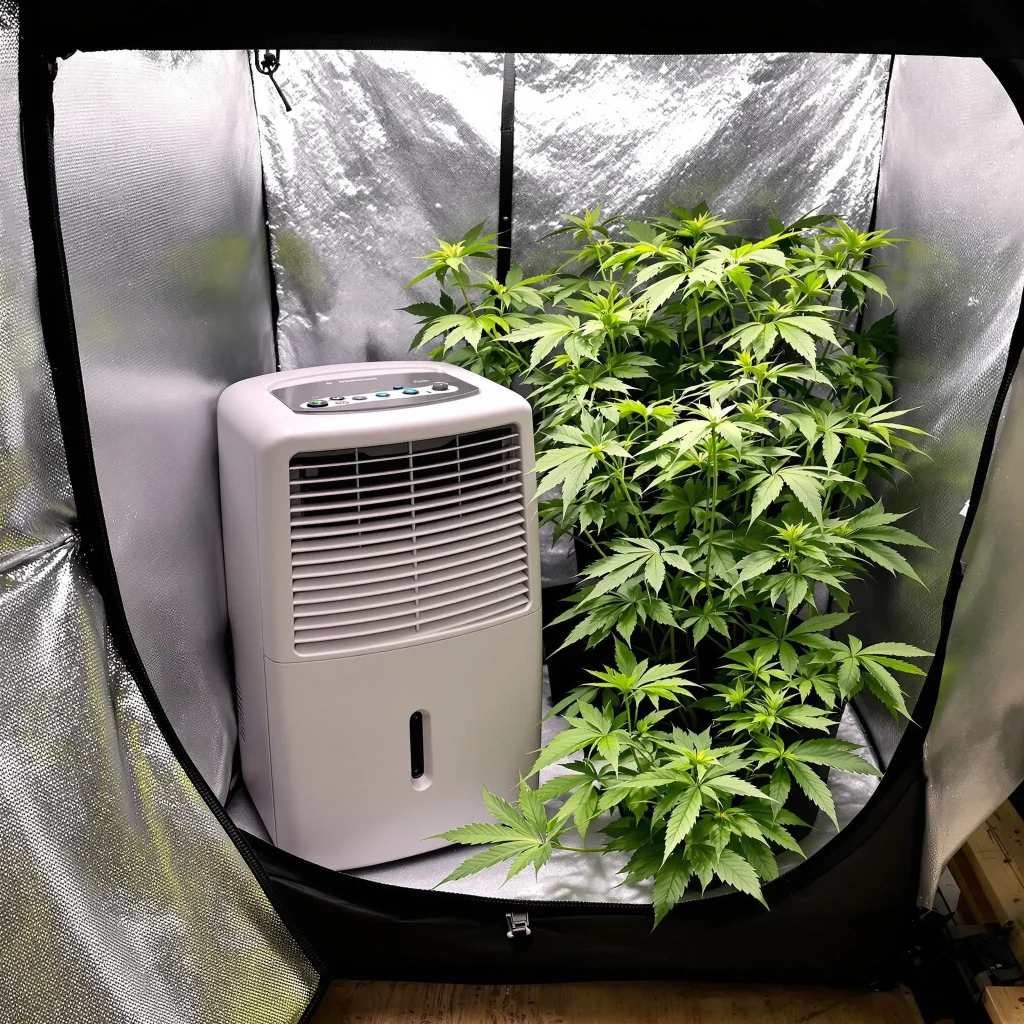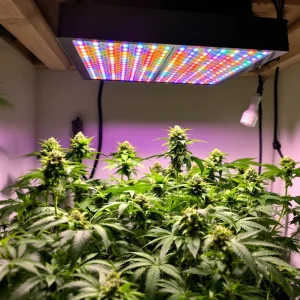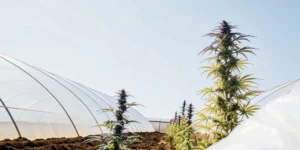Managing humidity in your grow tent is critical for cultivating high-quality cannabis. But is a dehumidifier necessary for your setup? Let’s delve into the importance of humidity control, how dehumidifiers for grow tents can improve your results, and whether it’s the right investment for you.
Why Humidity Control Matters in a Grow Tent
Humidity in Plant Growth
Humidity affects your plants’ ability to absorb nutrients, regulate water levels, and develop healthy buds. High humidity can lead to mold and mildew, while low humidity stresses your plants, hindering their growth. For optimal yields, maintaining the correct humidity levels is crucial.
Cannabis thrives within specific humidity ranges at different growth stages. If these levels are not maintained, your plants may exhibit signs of stress, reduced resin production, or even bud rot. Dehumidifiers for grow tents provide consistent control, ensuring a stable growing environment.
Ideal Humidity Levels for Cannabis
The recommended humidity levels for cannabis are:
- Seedling Stage: 65–70% humidity helps the young plants retain moisture and establish strong roots.
- Vegetative Stage: 40–60% humidity encourages vigorous growth.
- Flowering Stage: 40–50% humidity prevents bud rot and enhances resin production.
- Drying Stage: 45–55% humidity ensures proper curing and prevents mold during the drying process.
These precise ranges highlight the importance of humidity management tools like dehumidifiers for grow tents.
Benefits of Using Dehumidifiers for Grow Tents
Prevention of Mold and Mildew
High humidity creates a breeding ground for mold and mildew, which can spread rapidly and ruin your entire harvest. A dehumidifier reduces excess moisture, keeping your grow tent free from harmful pathogens. By removing the excess water vapor in the air, these devices create an inhospitable environment for fungi, safeguarding your plants and the time you’ve invested in them.
Mold prevention is especially important during the flowering stage when dense buds are more susceptible to moisture-related issues. Dehumidifiers for grow tents ensure your buds remain dry and safe. This added protection preserves not only the physical integrity of the flowers but also their potency and flavor profiles, offering a higher-quality end product.
Improved Bud Quality
Maintaining optimal humidity levels contributes to dense, resin-rich buds. Excess humidity can lead to fluffy, airy flowers with reduced potency. By stabilizing the environment, dehumidifiers enhance the overall quality of your harvest. Stable conditions also promote the healthy development of trichomes, which are essential for potency and aroma. For example, if you’re cultivating 70/30 Indica Dominant Strains, maintaining optimal humidity is crucial to preserve their robust bud quality.
Growers who invest in dehumidifiers for grow tents often report a noticeable improvement in trichome production and terpene retention. These enhancements not only boost the cannabinoid profile of the plants but also result in a more flavorful and aromatic product. The consistent climate ensures that your efforts in cultivation translate directly into superior results.
Reduced Stress for Plants
Consistent humidity reduces plant stress, allowing cannabis to focus on photosynthesis and cannabinoid production. Plants thrive when environmental factors like humidity are within optimal ranges, as it reduces the risk of issues like overwatering or nutrient lockout caused by fluctuating moisture levels.
Fluctuating humidity levels can cause issues like nutrient deficiencies, wilting, or stunted growth, all of which dehumidifiers help prevent. By creating a stable environment, dehumidifiers also minimize the risk of pests that are attracted to damp conditions, ensuring healthier growth and maximizing yield potential.
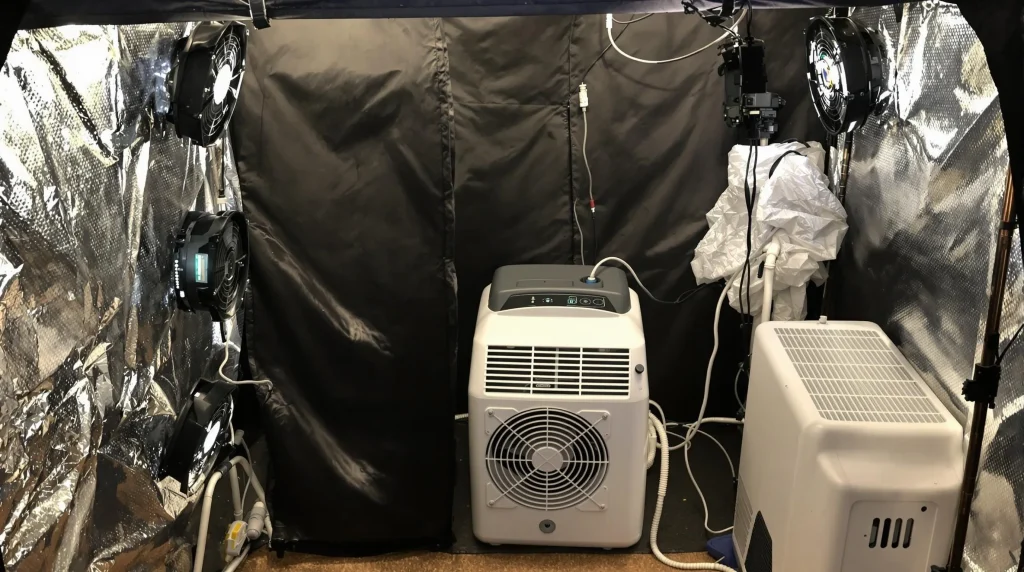
How to Choose the Best Dehumidifier for Grow Tents
Size Matters
The size of your grow tent determines the capacity of the dehumidifier you’ll need. Dehumidifiers are rated by the amount of moisture they can remove in 24 hours (pints/day). For small tents, a compact unit with a capacity of 10–20 pints/day may suffice, while larger setups require more robust models capable of handling 30–50 pints/day or more.
Selecting the right size dehumidifier for grow tents ensures consistent performance without overloading your system or wasting energy. A properly sized unit will maintain ideal humidity levels efficiently, reducing the risk of mold, mildew, and other moisture-related issues.
Energy Efficiency
Energy-efficient dehumidifiers are essential for reducing electricity costs, especially if they run continuously. Look for models with energy-saving certifications and adjustable settings to balance performance with affordability. Units with energy-saving modes can help reduce operational costs while maintaining effectiveness.
Opting for an energy-efficient dehumidifier for grow tents not only saves money but also minimizes your environmental footprint. Advanced features like programmable timers and eco-friendly refrigerants add to the sustainability of your setup.
Key Features to Look For
When shopping for dehumidifiers for grow tents, prioritize models with:
- Adjustable Humidity Settings: Customize levels to suit each growth stage, from vegetative to flowering.
- Auto Shut-Off: Prevents overflow and reduces maintenance, ensuring hassle-free operation.
- Low Noise Output: Ideal for indoor growers seeking a quiet environment, particularly in shared living spaces.
- Continuous Drainage: Simplifies water removal for larger grows, saving time and effort.
- Digital Displays and Hygrometers: Built-in displays make monitoring and adjusting humidity levels easier and more precise.
Setting Up a Dehumidifier in Your Grow Tent
Placement Tips
Positioning your dehumidifier correctly ensures even humidity distribution. Place it near the center of the tent or close to areas prone to moisture buildup, such as corners or dense plant clusters. Avoid blocking airflow from fans or exhaust vents, as this can hinder its effectiveness and create uneven conditions.
Using dehumidifiers for grow tents in strategic locations maximizes efficiency and ensures all plants benefit equally. Ensure there’s adequate space around the unit for air intake and exhaust, as restricted airflow can compromise its performance.
Adjusting Humidity Settings
Set the dehumidifier to match your plants’ growth stage. For example:
- During the vegetative stage, aim for 50–60% humidity to support healthy leaf and stem development.
- During flowering, lower it to 40–50% to prevent bud rot and encourage resin production.
Regularly check the humidity levels with a hygrometer to fine-tune the settings. Periodic adjustments ensure that environmental conditions remain optimal throughout the growth cycle.
Maintenance and Cleaning
Dehumidifiers require routine maintenance to perform efficiently. Clean the filter monthly to prevent clogs and maintain airflow. Empty the water reservoir regularly or connect a drainage hose for continuous operation in high-humidity environments. Neglecting maintenance can lead to reduced effectiveness, higher energy costs, or equipment failure. Regular upkeep ensures that your dehumidifier for grow tents remains reliable and extends its lifespan.
Alternatives to Dehumidifiers for Grow Tents
Enhanced Ventilation
Improved airflow through fans or exhaust systems can help control humidity naturally. Oscillating fans and strategically placed vents encourage air circulation, which disperses excess moisture. While not as precise as a dehumidifier, this method works well in small grow tents or regions with low ambient humidity.
For larger setups, combining enhanced ventilation with other methods like silica gel or desiccants can provide moderate humidity control. Regular monitoring ensures that adjustments can be made to maintain stability.
Silica Gel or Desiccants
Silica gel packs or other desiccants absorb moisture passively. Place them strategically around the grow tent to reduce humidity levels slightly. These are low-cost alternatives but lack the capacity to manage large moisture loads in high-humidity environments. Desiccants are ideal for growers on a budget or those dealing with minor humidity fluctuations. However, they require regular replacement to remain effective, making them less practical for long-term or large-scale use.
DIY Solutions
Homemade dehumidifiers, such as salt-based desiccants or calcium chloride containers, can be effective for minor humidity issues. These solutions are cost-effective and easy to set up, requiring basic household materials.
However, DIY options demand frequent monitoring and replacement, making them less reliable for larger grow tents or consistent humidity control. They are best suited for short-term use or as supplementary methods in low-moisture environments.
Challenges of Not Using a Dehumidifier in Your Grow Tent
Inconsistent Humidity Levels
Without a dehumidifier, environmental conditions can fluctuate dramatically, especially in regions with high humidity. These fluctuations stress plants, leading to reduced growth rates and lower yields. Unstable humidity also impacts nutrient uptake, which can result in deficiencies or imbalances.
Maintaining consistent humidity levels is essential for healthy plant development. A controlled environment allows cannabis to thrive, maximizing both quality and quantity during harvest.
Increased Risk of Disease
High humidity fosters mold, mildew, and pests like spider mites. These issues can spread rapidly in confined grow spaces, damaging plants and compromising your harvest. Fungal infections like powdery mildew can be particularly devastating during the flowering stage.
Dehumidifiers for grow tents are a proactive solution to mitigate these risks. By maintaining optimal humidity, growers can safeguard their plants and ensure a healthy growing environment.
Quality Compromises
Buds exposed to excess humidity may develop loose structures and lose potency. Overly moist environments can also dilute terpene profiles, reducing flavor and aroma.
Dehumidifiers for grow tents ensure a controlled environment that promotes resin-rich, high-quality cannabis. Consistent conditions enhance trichome production, resulting in a more potent and aromatic product.
When Should You Invest in a Dehumidifier for Grow Tents?
Signs You Need One
- Humidity Levels Above 60%: Persistent high humidity, especially during flowering, is a clear indication that a dehumidifier is necessary to protect your plants.
- Visible Mold: If mold appears on your plants or tent surfaces, act immediately to prevent further spread.
- Condensation: Wet walls, ceilings, or equipment signal excess moisture, which can harm both plants and grow equipment.
- Poor Growth or Quality: Stunted growth or low-quality harvests may indicate that high humidity is affecting plant health.
Seasonal Considerations
Humidity often increases during rainy or humid seasons, posing challenges for growers. Growers in tropical or coastal areas benefit significantly from dehumidifiers to manage year-round challenges. Investing in a dehumidifier for grow tents during seasonal shifts ensures that environmental conditions remain optimal, regardless of external weather changes. Long-term planning helps mitigate potential risks and enhances overall yields.
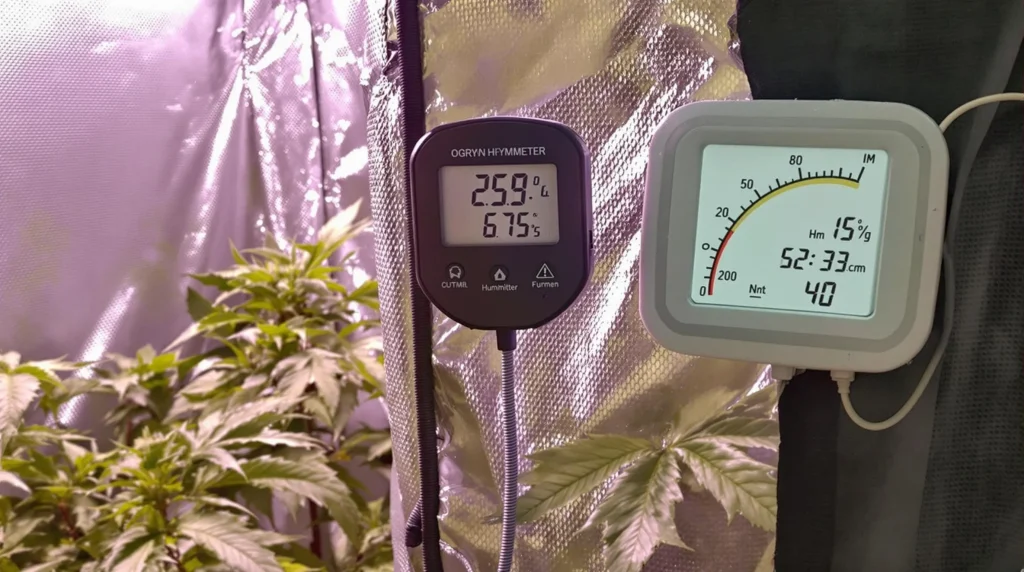
FAQs About Dehumidifiers for Grow Tents
Do I need a dehumidifier for every grow tent?
Not always. If your tent is well-ventilated and located in a naturally dry area, a dehumidifier may not be necessary. However, high-humidity environments or dense plant setups almost always require one. Factors like local climate, the number of plants, and the stage of growth significantly influence the need for a dehumidifier. For example, tents with thick foliage can trap moisture, making dehumidifiers essential to prevent mold and mildew.
Are household dehumidifiers suitable for grow tents?
Yes, household dehumidifiers can be suitable for grow tents as long as the unit fits your tent’s size and has adjustable settings. Compact models work well for smaller grow tents, providing effective moisture control without taking up too much space. For larger grow setups, industrial-grade or high-capacity dehumidifiers are more appropriate to handle higher humidity levels efficiently.
How often should I run a dehumidifier in my grow tent?
The frequency of running a dehumidifier depends on your environment and the growth stage of your plants. During the vegetative stage, you might only need to run it periodically to maintain humidity levels between 50-60%. However, during flowering, it’s best to run the dehumidifier continuously to keep humidity between 40-50%, preventing bud rot and other moisture-related issues.
What happens if I don’t control humidity in my grow tent?
Uncontrolled humidity can lead to a range of problems, including mold, mildew, pest infestations, and reduced yields. High humidity levels foster the growth of harmful fungi, which can spread rapidly and devastate your crop. Dense buds are particularly vulnerable to bud rot, a condition that can ruin your harvest during the critical flowering stage.

